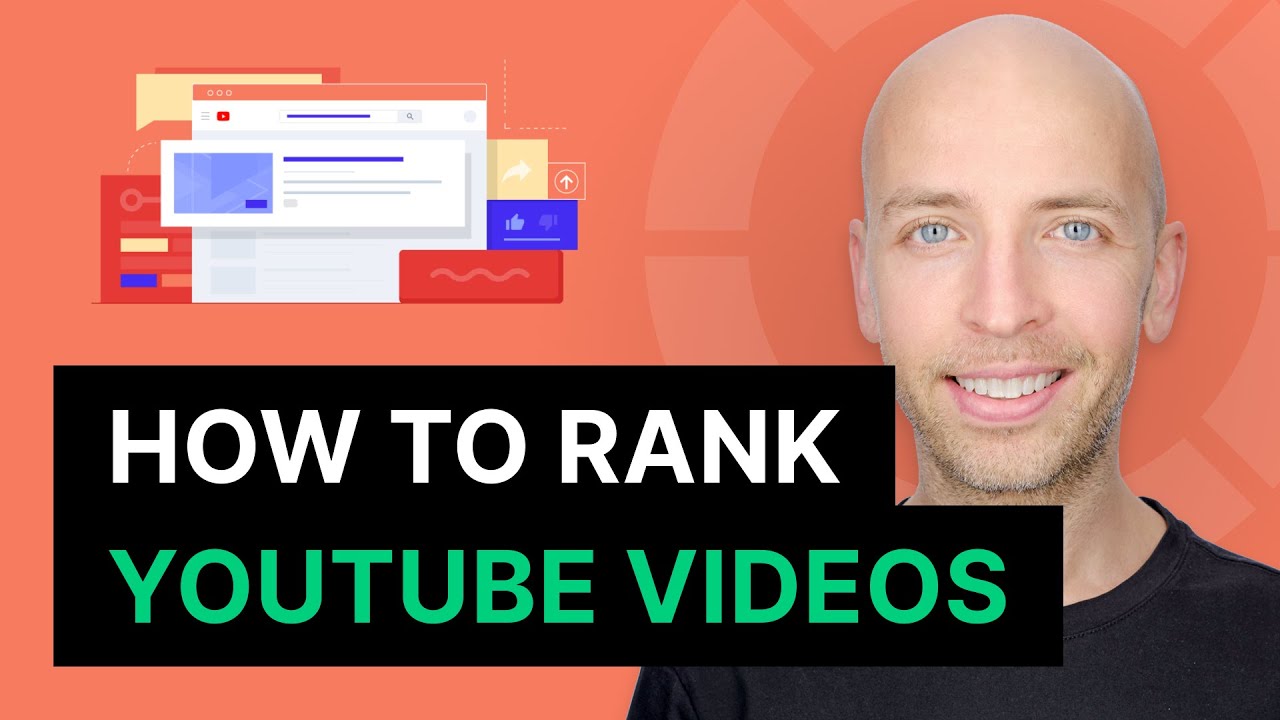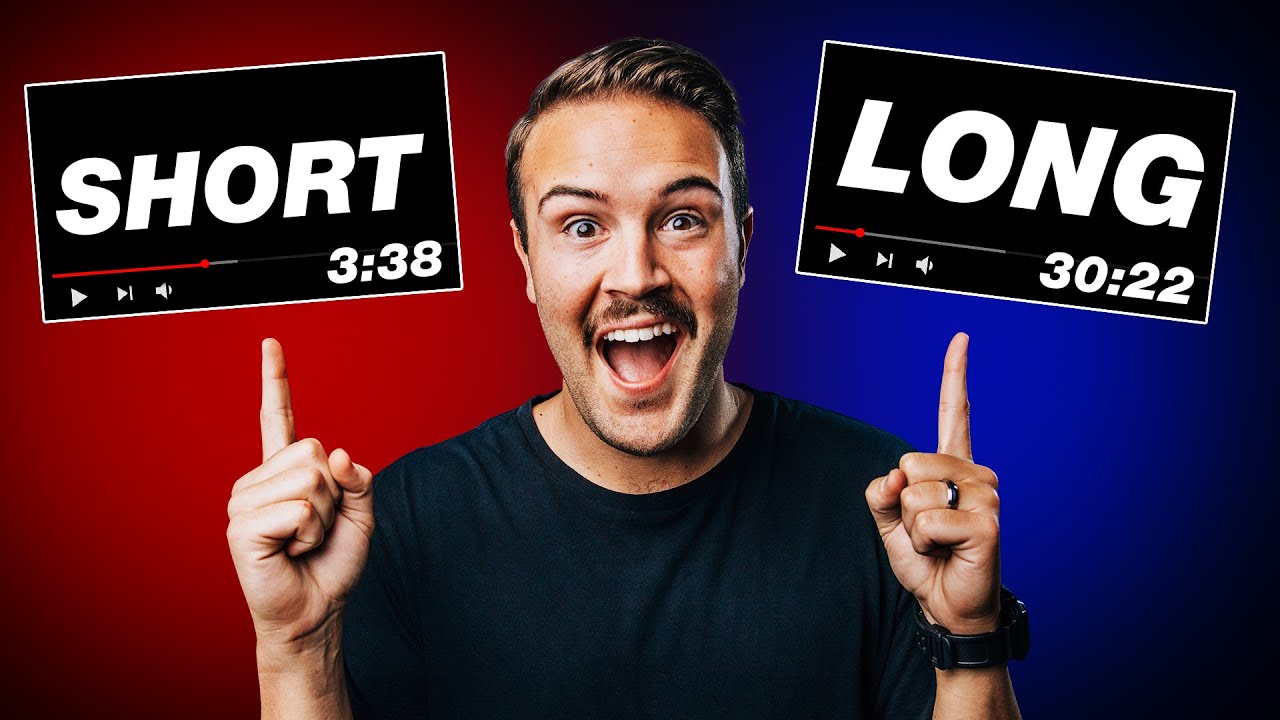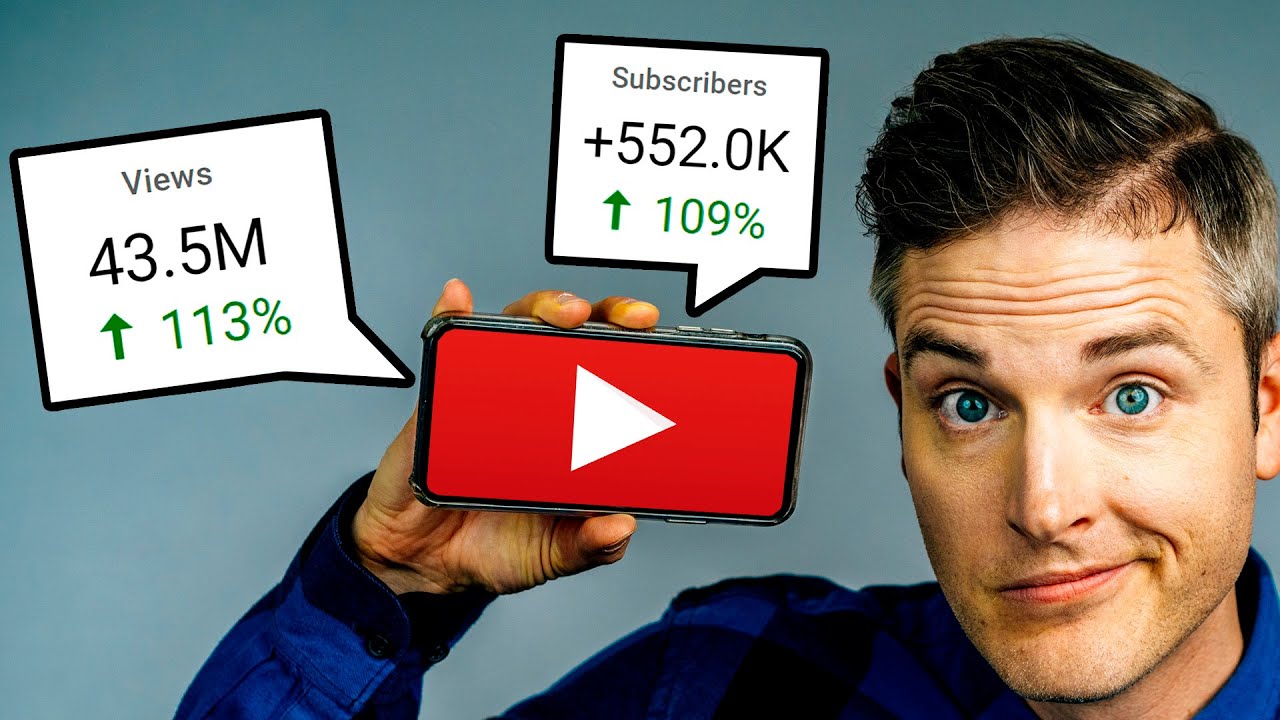In the digital era, YouTube has emerged as a powerful platform for video content, with millions of users actively engaging with videos on a daily basis. However, with such a vast amount of content available, it's crucial for content creators to implement effective strategies to ensure their videos are discoverable and rank well in search results. This is where YouTube SEOcomes into play.
YouTube SEO, or search engine optimization, involves optimizing various elements of your videos to increase their visibility and reach a wider audience. In this article, we will delve into the world of YouTube SEOand explore the strategies that can help you optimize your videos for success.
What Is YouTube SEO?

What is YouTube SEO?
YouTube SEOrefers to the process of optimizing your YouTube videos and channel to improve their visibility, ranking, and organic traffic within YouTube's search results. It involves implementing various strategies and techniques to optimize different elements of your videos, such as titles, descriptions, tags, thumbnails, and engagement factors, to increase their discoverability and attract a larger audience.
The goal of YouTube SEO is to enhance your video's chances of appearing in relevant search queries, suggested videos, and related video recommendations. By optimizing your content for YouTube's algorithm and user search intent, you can increase your video's visibility, drive more organic views, and grow your subscriber base. Key aspects of YouTube SEO include:
- Keyword Research -Identifying relevant keywords and search phrases that your target audience uses when searching for content on YouTube. This involves understanding popular search terms, competition, and search volume to strategically incorporate keywords into your video titles, descriptions, and tags.
- Optimized Titles and Descriptions -Crafting compelling, concise, and keyword-rich titles and descriptions that accurately represent your video's content. This helps both YouTube's algorithm and viewers understand what your video is about, improving its visibility and click-through rate.
- Tags and Metadata -Utilizing relevant tags and metadata to provide additional context and relevance to your videos. This includes incorporating both broad and specific tags that describe your video's content, allowing YouTube to associate your video with related topics and increase its chances of being suggested to viewers.
- Engaging Thumbnails -Create visually appealing and attention-grabbing thumbnails that entice viewers to click on your video. Thumbnails play a crucial role in attracting viewers and differentiating your video from others in search results and suggested videos.
- Video Quality and Engagement -Producing high-quality, engaging, and valuable content that encourages viewers to watch, like, comment, and share your videos. Positive engagement signals, such as watch time, likes, comments, and subscriptions, contribute to your video's perceived value and can improve its ranking in search results.
- Promotion and Backlinks-Actively promoting your videos through social media, collaborations, embedding on websites, and acquiring backlinks. Increased exposure and external linkscan boost your video's authority, visibility, and overall SEO performance.
- Analytics and Iteration -Analyzing data from YouTube Analytics, monitoring performance metrics, and iterating your content strategybased on audience behavior and preferences. This iterative approach allows you to continuously optimize your videos and improve their performance over time.
Why Is YouTube SEO Important?

YouTube SEO - What are the Benefits of Using YouTube for SEO
YouTube SEO is crucial for several reasons:
- Increased VisibilityYouTube is a vast platform with billions of videos. By optimizing your videos for SEO, you increase the chances of your content being discovered by users who are actively searching for related topics. Improved visibility can lead to higher organic traffic and greater exposure for your channel.
- Higher Rankings in Search Results -YouTube's algorithm determines the ranking of videos in search results based on various factors, including relevance, engagement, and viewer satisfaction. By implementing effective SEO strategies, you can improve your video's rankings, increasing the likelihood of it appearing at the top of search results and attracting more clicks.
- More Organic Traffic - When your videos rank higher in search results, they receive more organic traffic. This means that users are more likely to find and click on your videos without the need for paid advertising. Organic traffic is valuable as it indicates genuine interest from users and can lead to increased engagement and subscriber growth.
- Targeted Audience Reach -By conducting keyword research and optimizing your videos accordingly, you can align your content with what your target audience is searching for. This enables you to reach a more targeted audience who are actively interested in the topics you cover, increasing the likelihood of engagement, shares, and conversions.
- Long-term Sustainability -Unlike some other forms of online advertising, YouTube SEO provides long-term sustainability for your channel. Once your videos are optimized and start ranking well, they can continue to drive traffic and generate views over time, even without constant promotion. This can lead to a consistent and growing viewership base for your channel.
- Competitive Advantage -YouTube is a highly competitive platform, with millions of content creators vying for attention. By implementing effective SEO strategies, you can gain a competitive edge by improving the visibility and discoverability of your videos. This allows you to stand out from the crowd and attract more viewers and subscribers.
YouTube SEO Best Practices

How to Rank YouTube Videos (7 NEW Strategies)
Keyword Research And Optimization

YouTube SEO Basics: How to GET VIEWS with Keyword Research
Keywords play a vital role in YouTube SEO. Begin by conducting thorough keyword research to identify relevant terms and phrases that align with your video content. Use tools like Google Keyword Planner, SEMrush, or VidIQ to discover popular keywords with a decent search volume and relatively low competition.
- Identify Relevant Keywords -Start by brainstorming and researching keywords that are relevant to your video's content. Consider the topics, themes, and main ideas covered in your video. Use tools like Google Keyword Planner, SEMrush, or VidIQ to find popular and relevant keywords related to your video's subject.
- Consider Search Volume and Competition -Evaluate the search volume and competition for the identified keywords. Aim for keywords with a decent search volume (indicating user interest) and relatively low competition (making it easier to rank for those keywords).
- Primary Keyword Selection -Choose a primary keyword or key phrase that accurately represents the main focus of your video. This primary keyword will be the main target for optimization efforts.
- Optimize the Title -Incorporate your primary keyword into the video title while keeping it concise and engaging. Ensure that the title accurately represents your video's content and is appealing to potential viewers.
- Optimize the Description -Craft a comprehensive and keyword-rich video description. Include your primary keyword naturally throughout the description, along with related secondary keywords. Write a compelling description that provides additional information about your video, entices viewers, and encourages them to click and watch.
- Tags Optimization -Add relevant tags to your video that reflect its content and target keywords. Use a combination of broad and specific tags to maximize visibility in related searches. Avoid overstuffing tags and focus on selecting tags that accurately describe the video.
- Closed Captions (CC) -If applicable, consider adding closed captions to your video. YouTube's algorithm indexes the captions, making them searchable. Use keywords naturally in your captions to improve the visibility and accessibility of your video.
- Monitor and Update -Regularly monitor the performance of your videos and analyze the keywords that are driving traffic and engagement. Use this information to update your optimization strategy, refine your keywords, and make iterative improvements to your future videos.
Engaging Thumbnails
Eye-catching thumbnails can significantly impact your video's click-through rate (CTR). Create visually appealing thumbnails that accurately represent your content and entice viewers to click. Consider using bold text, vibrant colors, and high-resolution images that stand out in search results.
Aim for consistency in your thumbnail design to establish a recognizable brand identity. Conduct A/B testing to determine which thumbnail style resonates best with your audience. Tools like Canva and Adobe Spark can simplify the process of creating captivating thumbnails.
- Be Eye-Catching -Use vibrant colors, bold fonts, and visually appealing images or graphics to make your thumbnail stand out. Aim for a thumbnail design that grabs viewers' attention and makes them curious about your video.
- Accurately Represent Your Content -Ensure that your thumbnail accurately reflects the content of your video. Misleading thumbnails can lead to high bounce rates and negative viewer feedback. Use visuals that convey the main topic or theme of your video.
- Focus on the Main Subject -Highlight the main subject of your video in the thumbnail. If you're featuring yourself or someone else, make sure their face is clear and visible. This helps create a connection with viewers and encourages them to click.
- Add Text and Titles -Include concise and compelling text on your thumbnail. Use attention-grabbing titles, numbers, or intriguing statements that pique viewers' curiosity. Keep the text clear and readable, even in small thumbnail sizes.
- Keep it Simple and Uncluttered -Avoid overcrowding your thumbnail with too many elements. A cluttered thumbnail can confuse viewers and make it difficult to understand the content at a glance. Use simple, clean designs that convey the message effectively.
- Test and Iterate -Conduct A/B testing with different thumbnail designs to see which ones generate higher click-through rates (CTR). Experiment with different colors, fonts, text placements, and imagery to find the thumbnail style that resonates best with your audience.
- Consistency and Branding-Establish a consistent visual style for your thumbnails to create brand recognition. Use a similar design, font, or color scheme across your videos to help viewers identify your content easily.
- Optimize for Different Devices -Consider how your thumbnails will appear on various devices, including mobile phones, tablets, and desktops. Ensure that your thumbnail elements are legible and visible in smaller sizes.
Video Length And Engagement

YouTube 101: BEST Video Length For New Channels
YouTube's algorithm values engagement metrics such as watch time and viewer retention. Therefore, it's crucial to create engaging content that keeps viewers hooked. While video length can vary depending on the topic, aim to provide valuable information efficiently without unnecessary filler.
- Watch Time and Viewer Retention -YouTube's algorithm places significant emphasis on watch time and viewer retention. Watch time refers to the total amount of time viewers spend watching your video, while viewer retention measures how long viewers stay engaged throughout the video. The longer viewers watch and the higher the retention rate, the more YouTube sees your video as valuable and relevant, leading to improved rankings in search results.
- Content Relevance and Value -It's crucial to provide valuable and relevant content that keeps viewers engaged. If your video delivers on its promise and meets viewer expectations, they are more likely to watch the entire video. Creating high-quality, informative, entertaining, or educational content that caters to your target audience's interests can help increase engagement and watch time.
- Optimal Video Length -The ideal video length can vary depending on the type of content and audience preferences. Generally, shorter videos tend to have higher retention rates as they require less time commitment from viewers. However, longer videos can also perform well if they consistently deliver value throughout and keep viewers engaged. It's important to strike a balance between providing comprehensive information and keeping the content concise and focused.
- Audience Attention Span -Consider your target audience's attention span when determining video length. Some audiences may prefer shorter, bite-sized videos, while others may be more inclined to watch longer, in-depth content. Analyzing your audience's behavior through YouTube analytics can provide insights into their viewing habits and help you tailor your content and video length accordingly.
- Viewer Interaction and Call-to-Action -Encourage viewer interaction within your videos to boost engagement. Include clear and compelling calls-to-action (CTAs) that prompt viewers to like, comment, subscribe, or visit your website. Engaging with viewer comments and fostering a sense of community can also contribute to increased engagement and watch time.
- Test and Analyze -Experiment with different video lengths and analyze the performance metrics to understand what works best for your specific audience and content. Monitor watch time, retention rates, and audience feedback to identify patterns and make informed decisions about the optimal length for future videos.
Promotion And Backlinks

How To Get Views On YouTube With Backlinks (Best Methods For New Channels)
Promotion and backlinks are important elements of YouTube SEO. They involve actively promoting your videos and acquiring external links to increase their visibility, reach, and authority. Here's how promotion and backlinks can enhance your YouTube SEO efforts:
- Social Media Promotion -Share your videos on your social media channels, such as Facebook, Twitter, Instagram, and LinkedIn. Leverage your existing audience and engage with them by posting teasers, behind-the-scenescontent, or compelling snippets to generate interest and drive traffic to your YouTube videos.
- Collaborations and Cross-Promotion -Collaborate with other YouTubers or influencersin your niche to reach their audience and tap into their established viewership. Co-create videos, participate in interviews or feature each other's channels to expand your reach and gain exposure to new potential viewers.
- Embed Videos on Websites and Blogs -Embed your YouTube videos on relevant pages of your website, blog posts, or guest articles. This not only provides additional exposure but also generates valuable backlinks to your video, increasing its authority in search rankings.
- Email Marketing-If you have an email list or newsletter, promote your videos to your subscribers. Send out regular updates with links to your latest videos or create dedicated email campaigns to showcase specific content. Encourage subscribers to share the videos with their networks, further amplifying your reach.
- Influencer Outreach -Reach out to influencers or bloggers who cover topics related to your video's content. Offer them the opportunity to feature your video or write a review. If they find your content valuable, they may share it with their audience, resulting in increased exposure and potential backlinks.
- Guest Posting and Article Syndication -Write guest posts or articles for other websites or publications within your niche. Include links to relevant videos within the content or author bio, directing readers to your YouTube channel. This not only drives traffic but also generates valuable backlinks from reputable sources.
- Engage in Online Communities -Participate in relevant online communities, forums, or groups where your target audience gathers. Share your expertise, provide valuable insights, and incorporate links to your videos when appropriate. Be mindful of the community guidelines and avoid spamming or self-promotion without adding value.
- Optimize Video Descriptions for Link Building-In your video descriptions, include links to relevant websites, blog posts, or resources that complement your video's content. This encourages others to link back to your video when referencing or citing your content, boosting its credibility and authority.
Analytics And Iteration

YouTube Analytics Explained: Step-by-Step Tutorial for Beginners
Analyze your YouTube analytics regularly to gain insights into your video performance. Identify trends, understand viewer behavior, and fine-tune your strategy accordingly. Pay attention to metrics such as watch time, audience retention, likes, comments, and shares. Leverage YouTube's Creator Studio or third-party tools like TubeBuddy and VidIQ to gather valuable data.
- YouTube Analytics -Utilize YouTube's built-in analytics tool to gain insights into your video performance. Explore metrics like watch time, audience retention, engagement, traffic sources, demographics, and more. Analyzing these data points helps you understand how viewers are interacting with your content and identify areas for improvement.
- Identify High-Performing Content -Analyze your top-performing videos based on watch time, views, and engagement metrics. Identify common themes, formats, or topics that resonate well with your audience. This information can guide your content creationstrategy and help you produce more of what your viewers enjoy.
- Track Audience Retention -Pay close attention to audience retention metrics to identify patterns of viewer drop-off. Determine at which points viewers tend to lose interest or stop watching. Use this information to refine your content structure, pacing, or storytelling techniques to keep viewers engaged throughout the video.
- Experiment with Content Variations -Test different content formats, styles, lengths, and topics to see what resonates best with your audience. Analyze the performance of these variations to understand which ones yield higher engagement and watch time. This iterative process helps you fine-tune your content strategy and optimize for improved results.
- Listen to Viewer Feedback - Engage with your audience by responding to comments, messages, and feedback. Actively listen to their suggestions, questions, and requests. This not only fosters a sense of community but also provides valuable insights into what your viewers want, allowing you to create content that meets their needs and preferences.
- Refine Titles and Thumbnails -Continuously evaluate the performance of your video titles and thumbnails. Experiment with different variations to see which combinations drive higher click-through rates (CTR). Analyze the CTR data in YouTube Analytics to understand which titles and thumbnails are most effective in capturing viewer attention.
- Stay Updated with Trends -Keep up with the latest trends, topics, and keywords within your niche. Monitor industry news, popular videos, and emerging trends to stay relevant and provide content that aligns with what viewers are searching for. Use this information to refine your content strategy and incorporate trending topics into your videos when appropriate.
- Set Goals and Measure Progress -Define specific goals for your YouTube channel, such as increasing subscribers, watch time, or engagement metrics. Regularly track your progress toward these goals and use analytics to identify areas for improvement. Set benchmarks and measure the impact of your iterative changes over time.
Leverage Google Trends For YouTube SEO

How to Effectively Use Google Trends for YouTube SEO
Google Trendscan be a valuable tool for optimizing your YouTube SEO strategy. It allows you to explore the popularity and search volume of specific keywords over time, providing insights into trending topics and audience interests. Here's how you can leverage Google Trends for YouTube SEO:
- Keyword Research - Use Google Trends to discover popular and relevant keywords related to your video content. Enter keywords or phrases relevant to your niche and analyze their search volume trends. Identify keywords that are on the rise or experiencing a consistent level of interest. Incorporating these trending keywords into your video titles, descriptions, and tags can help improve your video's visibility and discoverability.
- Seasonal and Timely Content -Google Trends can highlight seasonal or timely topics that are currently trending. Explore the "Trending Searches" section to identify upcoming events, holidays, or industry-specific trends. Creating content around these trending topics can attract more viewers as they actively search for related content.
- Compare Multiple Keywords -Compare the search volume and interest of different keywords to identify which ones are more popular or have a higher growth trajectory. This comparison can help you prioritize keywords and focus on those that have a higher potential for driving traffic and engagement.
- Geographic Insights -Google Trends provides geographic data, allowing you to see where specific keywords are most popular. This information can help you target specific regions or tailor your content to appeal to viewers in different locations. Consider localizing your content or creating region-specific videos based on the geographic insights from Google Trends.
- Explore Related Queries -The "Related Queries" section in Google Trends displays additional search terms that are commonly associated with your chosen keyword. This can help you discover related topics and ideas for video content. Incorporating these related queries into your videos can improve their relevance and increase the likelihood of being discovered by viewers.
- Validate Content Ideas -Use Google Trends to validate your content ideas by checking if there is a consistent interest in the topic over time. Ensure that the topics you plan to cover have an audience and are not just a short-lived trend. This helps you focus on creating evergreen contentthat maintains its relevance and searchability over an extended period.
- Long-Term Strategy -Analyze the historical data in Google Trends to identify long-term trends and patterns within your niche. This information can guide your content strategy and help you create videos that align with long-lasting audience interests.
People Also Ask
What Are The Best Practices For YouTube Video Titles In Terms Of SEO?
When crafting YouTube video titles for SEO, include relevant keywords, keep them concise and engaging, accurately represent your content, and consider adding numbers or intriguing statements to attract viewers.
How Important Are Video Descriptions For YouTube SEO?
Video descriptions are essential for YouTube SEO. Write informative and keyword-rich descriptions, utilize the available character limit wisely, and include relevant links, timestamps, and a call-to-action to engage viewers.
Do Video Tags Impact YouTube SEO?
Video tags have an impact on YouTube SEO. Add relevant tags that reflect your video's content and target keywords. Use both broad and specific tags to maximize visibility in related searches.
Does Video Watch Time Affect YouTube SEO?
YouTube's algorithm values engagement metrics like watch time. Creating engaging content that holds viewers' attention and encourages longer watch times can positively influence your video's rankings in search results.
Conclusion
YouTube SEO is an essential aspect of growing your channel and reaching a wider audience on the platform. Remember, consistency and continuous improvement are key factors in achieving long-term success with YouTube SEO.
Stay up-to-date with the latest trends and best practices, and be willing to adapt and iterate your strategies based on audience feedback and analytics. With the right approach, YouTube SEO can propel your videos to new heights and help you establish a strong presence in the competitive world of online video content.
